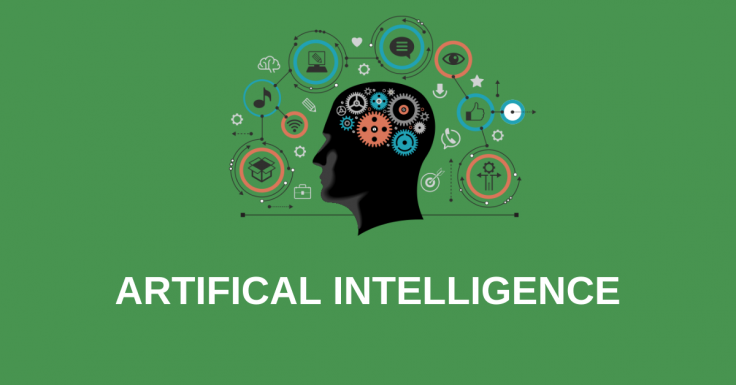COURSE : ARTIFICAL INTELLIGENCE | ONLINE TRAINING | DURATION : 60 HOURS
ABOUT COURSE
Artificial Intelligence has been predicted to be the most in-demand job in the coming years. According to IDC, the total spending on products and services that incorporate Augmented Reality and/or Virtual Reality concepts will soar from 11.4 billion as of 2017, to almost 215 billion by the year 2021. This is great news for AI career aspirants as the demand for such IT professionals will reach the sky in the coming years.
EazyGurus course will help you learn the basics of modern AI as well as some of the representative applications of AI. You will get into the core fundamentals of AI and learn about programming concepts, including heuristic search and genetic programming, developing games and building intelligent applications that will be used to deliver solutions to problems in organizations and business. Along the way, we also hope to excite you about the numerous applications and huge possibilities in the field of AI, which continues to expand human capability beyond our imagination.
Artificial Intelligence (AI) has a long history but is still properly and actively growing and changing. In this course, you’ll learn the basics of modern AI as well as some of the representative applications of AI such as Data Science, Machine Learning, Deep Learning, Statistics, Artificial Neural Networks, Restricted Boltzmann Machine (RBM) and Tensorflow with Python. Along the way, we also hope to excite you about the numerous applications and huge possibilities in the field of AI, which continues to expand human capability beyond our imagination. This Artificial Intelligence course will provide a broad understanding of the basic techniques for building intelligent computer systems and an understanding of how AI is going to apply.
What You Will Learn
1. Machine Learning Techniques
Realize different classification and regression techniques.
2. Clustering
Understand the concept of clustering and how to use it to automatically segment data
3. Natural Language Processing
Learn the basics of text processing in Python
4. Building Games
Understand the basics of heuristic search and genetic programming, develop AI games
5. Build intelligent systems
Discover how to build intelligent applications centered on images, text, and time series data.
6. Deep learning algorithms
See how to use deep learning algorithms and build applications based on it
7. Reinforcement Learning
Learn how reinforcement learning creates an environment
8. Real-time Object Detection
Learn to detect objects and extract feature to implement operations in real-time
Prerequisites
- Sound knowledge in Python Programming
- Familiarity with Data Science
Course Syllabus
Introduction to Data Science Deep Learning & Artificial Intelligence
Introduction to Deep Learning & AI
Deep Learning: A revolution in Artificial Intelligence
- Limitations of Machine Learning
What is Deep Learning?
- Need for Data Scientists
- Foundation of Data Science
- What is Business Intelligence
- What is Data Analysis
- What is Data Mining
What is Machine Learning?
Analytics vs Data Science
- Value Chain
- Types of Analytics
- Lifecycle Probability
- Analytics Project Lifecycle
- Advantage of Deep Learning over Machine learning
- Reasons for Deep Learning
- Real-Life use cases of Deep Learning
- Review of Machine Learning
Data
- Basis of Data Categorization
- Types of Data
- Data Collection Types
- Forms of Data & Sources
- Data Quality & Changes
- Data Quality Issues
- Data Quality Story
- What is Data Architecture
- Components of Data Architecture
- OLTP vs OLAP
- How is Data Stored?
Big Data
- What is Big Data?
- 5 Vs of Big Data
- Big Data Architecture
- Big Data Technologies
- Big Data Challenge
- Big Data Requirements
- Big Data Distributed Computing & Complexity
- Hadoop
- Map Reduce Framework
- Hadoop Ecosystem
Data Science Deep Dive
- What Data Science is
- Why Data Scientists are in demand
- What is a Data Product
- The growing need for Data Science
- Large Scale Analysis Cost vs Storage
- Data Science Skills
- Data Science Use Cases
- Data Science Project Life Cycle & Stages
- Data Acuqisition
- Where to source data
- Techniques
- Evaluating input data
- Data formats
- Data Quantity
- Data Quality
- Resolution Techniques
- Data Transformation
- File format Conversions
- Annonymization
Python
- Python Overview
- About Interpreted Languages
- Advantages/Disadvantages of Python pydoc.
- Starting Python
- Interpreter PATH
- Using the Interpreter
- Running a Python Script
- Using Variables
- Keywords
- Built-in Functions
- StringsDifferent Literals
- Math Operators and Expressions
- Writing to the Screen
- String Formatting
- Command Line Parameters and Flow Control.
- Lists
- Tuples
- Indexing and Slicing
- Iterating through a Sequence
- Functions for all Sequences
Operators and Keywords for Sequences
- The xrange() function
- List Comprehensions
- Generator Expressions
- Dictionaries and Sets.
Numpy & Pandas
- Learning NumPy
- Introduction to Pandas
- Creating Data Frames
- GroupingSorting
- Plotting Data
- Creating Functions
- Slicing/Dicing Operations.
Deep Dive – Functions & Classes & Oops
- Functions
- Function Parameters
- Global Variables
- Variable Scope and Returning Values. Sorting
- Alternate Keys
- Lambda Functions
- Sorting Collections of Collections
- Classes & OOPs
Statistics
- What is Statistics
- Descriptive Statistics
- Central Tendency Measures
- The Story of Average
- Dispersion Measures
- Data Distributions
- Central Limit Theorem
- What is Sampling
- Why Sampling
- Sampling Methods
- Inferential Statistics
- What is Hypothesis testing
- Confidence Level
- Degrees of freedom
- what is pValue
- Chi-Square test
- What is ANOVA
- Correlation vs Regression
- Uses of Correlation & Regression
Machine Learning, Deep Learning & AI using Python
Introduction
- ML Fundamentals
- ML Common Use Cases
- Understanding Supervised and Unsupervised Learning Techniques
Clustering
- Similarity Metrics
- Distance Measure Types: Euclidean, Cosine Measures
- Creating predictive models
- Understanding K-Means Clustering
- Understanding TF-IDF, Cosine Similarity and their application to Vector Space Model
- Case study
Implementing Association rule mining
- What is Association Rules & its use cases?
- What is Recommendation Engine & it’s working?
- Recommendation Use-case
- Case study
Understanding Process flow of Supervised Learning Techniques
Decision Tree Classifier
- How to build Decision trees
- What is Classification and its use cases?
- What is Decision Tree?
- Algorithm for Decision Tree Induction
- Creating a Decision Tree
- Confusion Matrix
- Case study
Random Forest Classifier
- What is Random Forests
- Features of Random Forest
- Out of Box Error Estimate and Variable Importance
- Case study
Naive Bayes Classifier.
- Case study
Project Discussion
Problem Statement and Analysis
- Various approaches to solve a Data Science Problem
- Pros and Cons of different approaches and algorithms.
Linear Regression
- Case study
- Introduction to Predictive Modeling
- Linear Regression Overview
- Simple Linear Regression
- Multiple Linear Regression
Logistic Regression
- Case study
- Logistic Regression Overview
- Data Partitioning
- Univariate Analysis
- Bivariate Analysis
- Multicollinearity Analysis
- Model Building
- Model Validation
- Model Performance Assessment AUC & ROC curves
- Scorecard
Support Vector Machines
- Case Study
- Introduction to SVMs
- SVM History
- Vectors Overview
- Decision Surfaces
- Linear SVMs
- The Kernel Trick
- Non-Linear SVMs
- The Kernel SVM
Time Series Analysis
- Describe Time Series data
- Format your Time Series data
- List the different components of Time Series data
- Discuss different kind of Time Series scenarios
- Choose the model according to the Time series scenario
- Implement the model for forecasting
- Explain working and implementation of ARIMA model
- Illustrate the working and implementation of different ETS models
- Forecast the data using the respective model
- What is Time Series data?
- Time Series variables
- Different components of Time Series data
- Visualize the data to identify Time Series Components
- Implement ARIMA model for forecasting
- Exponential smoothing models
- Identifying different time series scenario based on which different Exponential Smoothing model can be applied
- Implement respective model for forecasting
- Visualizing and formatting Time Series data
- Plotting decomposed Time Series data plot
- Applying ARIMA and ETS model for Time Series forecasting
- Forecasting for given Time period
- Case Study
Machine Learning Project
Machine learning algorithms Python
- Various machine learning algorithms in Python
- Apply machine learning algorithms in Python
Feature Selection and Pre-processing
- How to select the right data
- Which are the best features to use
- Additional feature selection techniques
- A feature selection case study
- Preprocessing
- Preprocessing Scaling Techniques
- How to preprocess your data
- How to scale your data
- Feature Scaling Final Project
Which Algorithms perform best
- Highly efficient machine learning algorithms
- Bagging Decision Trees
- The power of ensembles
- Random Forest Ensemble technique
- Boosting – Adaboost
- Boosting ensemble stochastic gradient boosting
- A final ensemble technique
Model selection cross validation score
- Introduction Model Tuning
- Parameter Tuning GridSearchCV
- A second method to tune your algorithm
- How to automate machine learning
- Which ML algo should you choose
- How to compare machine learning algorithms in practice
Text Mining& NLP
- Sentimental Analysis
- Case study
PySpark and MLLib
- Introduction to Spark Core
- Spark Architecture
- Working with RDDs
- Introduction to PySpark
- Machine learning with PySpark – Mllib
Deep Learning & AI using Python
Deep Learning & AI
- Case Study
- Deep Learning Overview
- The Brain vs Neuron
- Introduction to Deep Learning
Introduction to Artificial Neural Networks
- The Detailed ANN
- The Activation Functions
- How do ANNs work & learn
- Gradient Descent
- Stochastic Gradient Descent
- Backpropogation
- Understand limitations of a Single Perceptron
- Understand Neural Networks in Detail
- Illustrate Multi-Layer Perceptron
- Backpropagation – Learning Algorithm
- Understand Backpropagation – Using Neural Network Example
- MLP Digit-Classifier using TensorFlow
- Building a multi-layered perceptron for classification
- Why Deep Networks
- Why Deep Networks give better accuracy?
- Use-Case Implementation
- Understand How Deep Network Works?
- How Backpropagation Works?
- Illustrate Forward pass, Backward pass
- Different variants of Gradient Descent
Convolutional Neural Networks
- Convolutional Operation
- Relu Layers
- What is Pooling vs Flattening
- Full Connection
- Softmax vs Cross Entropy
- ” Building a real world convolutional neural network
- for image classification”
What are RNNs – Introduction to RNNs
- Recurrent neural networks rnn
- LSTMs understanding LSTMs
- long short term memory neural networks lstm in python
Restricted Boltzmann Machine (RBM) and Autoencoders
- Restricted Boltzmann Machine
- Applications of RBM
- Introduction to Autoencoders
- Autoencoders applications
- Understanding Autoencoders
- Building a Autoencoder model
Tensorflow with Python
- Introducing Tensorflow
- Introducing Tensorflow
- Why Tensorflow?
- What is tensorflow?
- Tensorflow as an Interface
- Tensorflow as an environment
- Tensors
- Computation Graph
- Installing Tensorflow
- Tensorflow training
- Prepare Data
- Tensor types
- Loss and Optimization
- Running tensorflow programs
Building Neural Networks using
Tensorflow
- Tensors
- Tensorflow data types
- CPU vs GPU vs TPU
- Tensorflow methods
- Introduction to Neural Networks
- Neural Network Architecture
- Linear Regression example revisited
- The Neuron
- Neural Network Layers
- The MNIST Dataset
- Coding MNIST NN
Deep Learning using
Tensorflow
- Deepening the network
- Images and Pixels
- How humans recognise images
- Convolutional Neural Networks
- ConvNet Architecture
- Overfitting and Regularization
- Max Pooling and ReLU activations
- Dropout
- Strides and Zero Padding
- Coding Deep ConvNets demo
- Debugging Neural Networks
- Visualising NN using Tensorflow
- Tensorboard
Transfer Learning using
Keras and TFLearn
- Transfer Learning Introduction
- Google Inception Model
- Retraining Google Inception with our own data demo
- Predicting new images
- Transfer Learning Summary
- Extending Tensorflow
- Keras
- TFLearn
- Keras vs TFLearn Comparison


